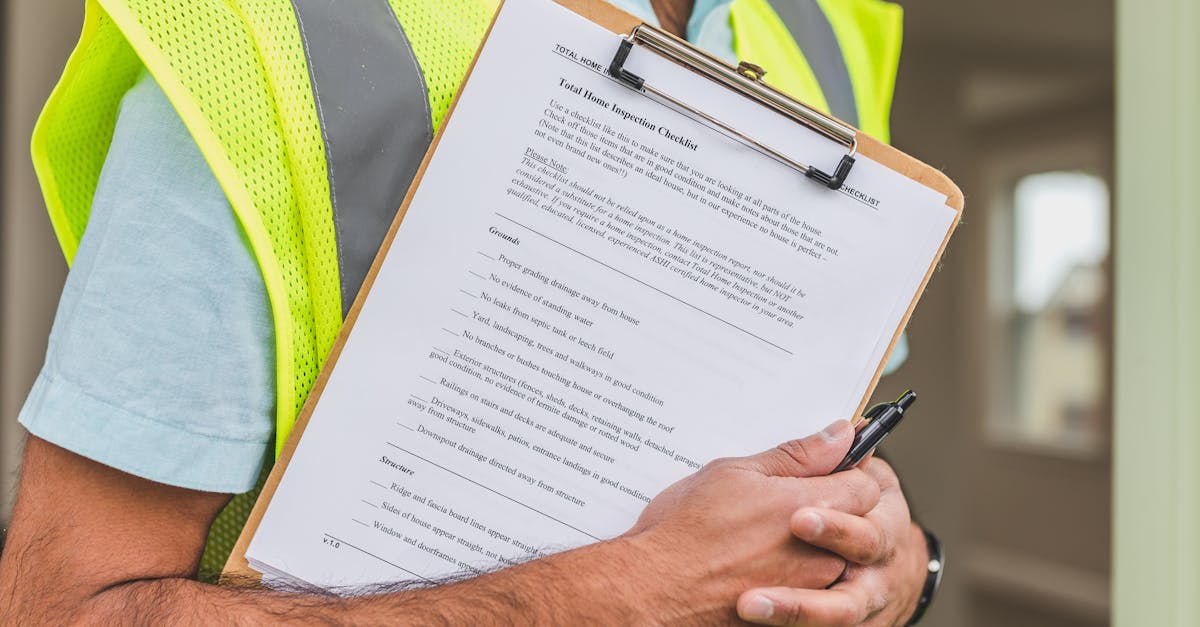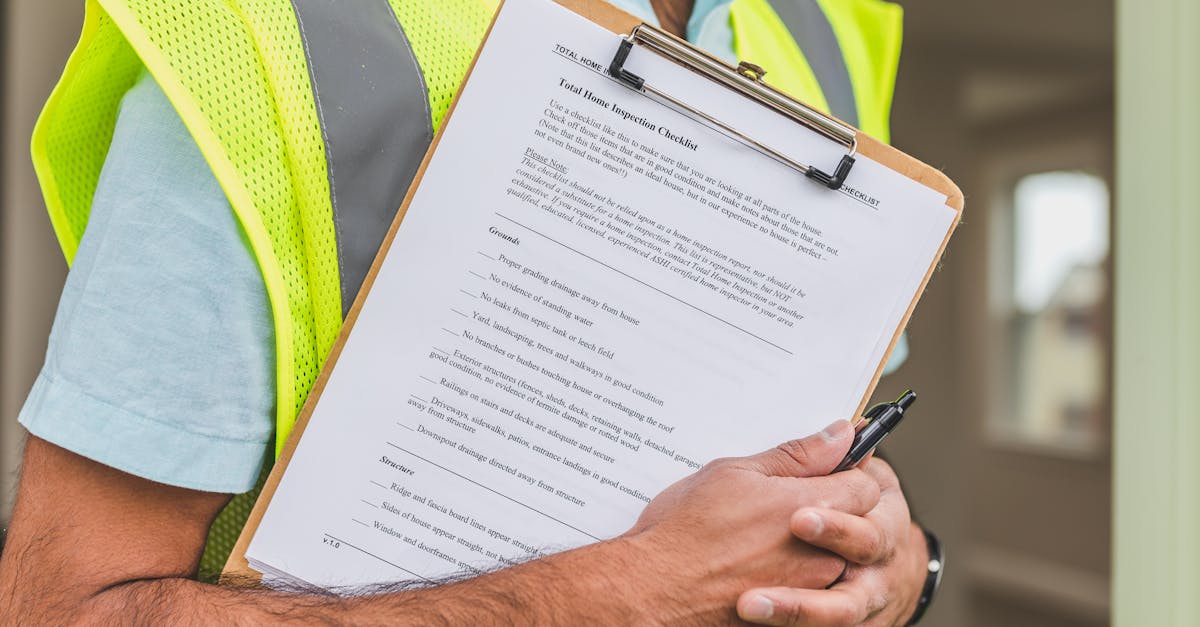Mold might not be the houseguest you invited, but it sure knows how to make itself at home. If you’ve ever found yourself wondering why your walls are sporting a new fuzzy coat, it’s time to grab that mold inspection checklist. This handy tool is like a detective for your home, helping you uncover hidden mold before it throws a party and invites all its friends.
With a thorough inspection, you can stop mold in its tracks and reclaim your space. Not only does mold love to lurk in damp corners, but it can also wreak havoc on your health and property. So, let’s dive into the essential steps of your mold inspection checklist and keep your home mold-free and fabulous. Because who needs a moldy mystery when you can have a sparkling clean sanctuary?
Table of Contents
ToggleImportance Of A Mold Inspection Checklist
Mold can lead to serious health issues, making it essential to identify its presence early. A thorough mold inspection checklist enables homeowners to spot signs of mold growth in various areas. Homeowners can maintain a safe living environment by recognizing common mold sources like damp basements and leaky roofs.
A mold inspection checklist provides a systematic approach to identifying mold hazards. The checklist outlines crucial areas to inspect, such as bathrooms, kitchens, and hidden spaces like attics. Inspecting these areas regularly prevents extensive mold infestations and the associated costs of remediation.
Identifying moisture control measures is another critical aspect of the checklist. Proper ventilation and humidity controls help mitigate mold growth, prompting homeowners to take proactive measures. When homeowners keep humidity levels below 60%, they significantly reduce the likelihood of mold development.
Utilizing a mold inspection checklist also fosters awareness of health risks associated with mold exposure. Common symptoms like respiratory issues and allergic reactions can worsen without timely identification and remediation. By prioritizing mold inspections, individuals can safeguard their health and well-being.
The checklist serves as a vital tool during real estate transactions as well. Buyers can use it to assess potential mold problems in properties they’re considering, leading to informed decision-making. Sellers benefit from addressing mold issues upfront, enhancing their property’s marketability and ensuring a smoother sales process.
Following a mold inspection checklist ultimately promotes a healthier home and community. Regular inspections become a habit, contributing to long-term structural integrity and reduced risks. An emphasis on consistent evaluation underscores the importance of remaining vigilant against mold growth.
Key Components Of A Mold Inspection Checklist
A mold inspection checklist consists of several essential components to thoroughly evaluate a property’s condition. This section highlights crucial aspects that aid in identifying and addressing mold problems effectively.
Visual Inspection
Visual inspection forms the foundation of mold assessment. Inspectors should examine visible surfaces, including walls, ceilings, and floors, for discoloration or staining. Check areas prone to moisture, such as basements, bathrooms, and kitchens. Pay close attention to hidden spaces like attics and crawl spaces, as mold often thrives in dark environments. Inspect for water leaks in plumbing and roofing systems that may contribute to mold growth. Observing musty odors also signals potential mold presence, prompting further investigation.
Moisture Assessment
Moisture assessment plays a vital role in mold inspection. Inspectors often utilize moisture meters to measure humidity levels in various building materials. Areas with sustained moisture levels above 60% typically indicate high vulnerability to mold growth. Inspectors should evaluate ventilation systems to ensure adequate air circulation, limiting moisture buildup. Regularly monitoring humidity levels offers preventative insights into maintaining a mold-free environment. Conducting thorough moisture assessments helps identify potential sources where mold may develop.
Sampling Methods
Sampling methods provide scientific validation during a mold inspection. Collect air samples to identify mold spores present in the indoor environment, while surface sampling assesses mold growth on materials. Specific techniques, such as tape lifts or bulk sampling, may yield accurate results. Samples should undergo laboratory analysis to identify mold species and quantity. Understanding the findings helps formulate remediation strategies tailored to the specific mold issues present. Accurate sampling offers insights into health risks associated with mold exposure, enhancing overall safety.
Steps To Conduct A Mold Inspection
Conducting a mold inspection involves several systematic steps for thorough assessment. Preparing properly sets the stage for effective inspection.
Preparing For The Inspection
Gather essential tools before starting. A flashlight, moisture meter, and personal protective equipment like gloves and masks prove useful. Identify areas with potential mold growth, focusing on moisture-prone locations, such as basements, bathrooms, and kitchens. Notify occupants about the inspection, ensuring they know the process. This communication reduces anxiety and prepares everyone involved.
Conducting The Inspection
Start with a visual inspection of surfaces. Look for discoloration, water stains, and any musty odors. Inspect hidden areas, such as attics and crawlspaces, often overlooked during routine checks. Use a moisture meter to measure humidity levels in suspicious areas. Address any signs of water leaks or condensation promptly. Document observations meticulously for later reference. Note areas of concern to discuss further.
Post-Inspection Actions
Compile findings in a clear report. Include areas with visual evidence or high moisture readings. Recommend remediation measures for identified mold sources. If necessary, consult professionals for thorough testing and removal. Communicate findings to occupants, providing specific next steps to mitigate mold growth. Regular follow-ups ensure ongoing monitoring of moisture levels to prevent future issues.
Common Mistakes To Avoid
Overlooking hidden areas is a frequent mistake during mold inspections. Inspectors often miss spaces like attics or crawl spaces, where mold can thrive unnoticed.
Ignoring moisture sources can exacerbate mold growth. Moisture control is vital; without addressing leaks or high humidity, mold problems may persist.
Using inadequate protective equipment poses health risks. Homeowners should wear masks and gloves during inspections to prevent exposure to mold spores and allergens.
Neglecting to document findings is another common oversight. A thorough inspection report serves as a reference for future evaluations and remediation efforts.
Failing to involve occupants in the inspection process may result in missed insights. Occupants can provide information about previous water damage or musty odors, aiding the inspection.
Rushing through the visual assessment can lead to missed signs of mold. Taking time to inspect surfaces, corners, and hidden crevices is essential for a comprehensive evaluation.
Assuming that all mold types are the same can hinder effective remediation. Identifying specific mold types influences cleaning methods and necessary interventions.
Not using appropriate tools, such as moisture meters, complicates accurate assessments. These instruments provide essential data about humidity levels and moisture presence.
Basing decisions solely on visual inspections can be misleading. Incorporating air and surface sampling adds scientific support to findings and recommendations.
Disregarding the need for follow-up inspections can allow mold to return. Regular monitoring ensures that any new mold growth is promptly identified and addressed.
Conclusion
A mold inspection checklist is an essential tool for maintaining a healthy home environment. By identifying potential mold growth early on, homeowners can avoid costly remediation and serious health risks. Regular inspections not only protect property but also enhance overall well-being.
Implementing moisture control measures and conducting thorough inspections are vital steps in preventing mold infestations. Being proactive in this regard can make a significant difference in long-term home maintenance.
Ultimately, a comprehensive mold inspection checklist empowers homeowners to take charge of their living spaces. By staying vigilant and informed, they can ensure their homes remain safe and mold-free for years to come.





